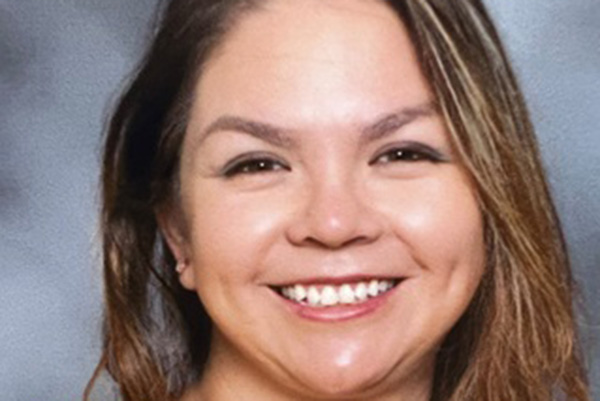Maricela Novoa is the central region Early Learning Connection bilingual specialist at Educational Service Unit 10. In her role, she supports career and professional development for early childhood educators and is responsible for recruiting bilingual trainers for the Nebraska Department of Education’s Office of Early Childhood. She also played a key role in planning the Growing Together: The Spanish Child Care Conference, which was held on April 27 in Grand Island, Neb. The Buffett Institute was one of more than a dozen conference sponsors.
We talked to Novoa about Nebraska’s early educators, the goals of the conference, and what she hears from Spanish-speaking families and child care providers.
This interview has been edited for length and clarity.
Q. How great is the need in Nebraska for more Spanish-speaking child care providers?

A. The need for more Spanish-speaking child care providers in Nebraska is increasingly evident. Dual-language programs are gaining popularity, with parents willing to travel to enroll their children in such programs. In our rapidly evolving world, multilingualism is highly valued, making this demand significant.
Q. How many Spanish-speaking providers are out there? How many more do we need?
A. Unfortunately, quantifying the exact number of Spanish-speaking providers remains a challenge. There isn't data available from state agencies to provide an accurate count. However, we do know that many providers offer informal care, and reaching out to them is crucial.
Although we can't pinpoint the exact number of Spanish providers needed, there's a noticeable gap between the number of children requiring care and the available licensed spots.
Q. Has the shortage always existed, or is it getting worse? Why is that?
A. The shortage of Spanish-speaking providers has always been present, but the COVID-19 pandemic exacerbated the issue, especially for essential workers in need of child care.
Q. What do current Spanish-speaking providers need to thrive? More training? Any other kinds of support?
A. More training and support are essential. They are eager for knowledge and seek opportunities for further education and development. However, limited resources, financial constraints, transportation issues, and child care needs often hinder their participation.
Q. What else are you hearing from current providers and/or Spanish-speaking families?
A. We've heard from providers and families about the complexities of the licensing process and challenges accessing subsidies. These additional barriers add to their stress, making it difficult for them to navigate the system.
In addition to the challenges faced by Spanish-speaking child care providers, the documentation status of providers also presents issues for obtaining a state license to provide child care. Many providers express a strong desire to enroll in Step Up to Quality and offer quality care, but they encounter barriers due to their status.
Being able to operate in a licensed space where high-quality care is provided would create an environment where children can thrive and reach their full potential.
One of the recurring challenges faced by providers is the lack of educational opportunities available in Spanish. Community colleges often have extensive waiting lists for English classes, leaving Spanish-speaking providers with limited options to advance their education.
We have explored alternative avenues such as Spanish credentials through the Child Development Associate program and we are considering opportunities in apprenticeships as a model for on-the-job training, allowing providers to earn as they learn. This approach could help alleviate many barriers, as we recognize the eagerness of Spanish-speaking providers to enhance their skills and become early childcare educators.
Q. What are the goals of the Growing Together conference? How can this event help?
A. The goals of the Growing Together conference align with addressing these challenges. We aim to:
- Recruit more individuals into the profession
- Educate current providers on early childhood content
- Build trust among Spanish-speaking providers
- Support quality learning environments for children
We believe that this event can be a catalyst for change, connecting providers with resources, grants, and agencies dedicated to their success.
One of the unique aspects we've observed in the child care sector is the varied background of providers, many of whom have transitioned from labor-intensive jobs, such as meatpacking, to pursue a career in early childhood education. Despite the challenges and long hours, they find fulfillment and joy in educating children and running their own businesses.
These providers have shared stories of leaving behind grueling work environments to embark on a rewarding journey in child care. They speak of working longer hours but with a renewed sense of purpose and a full emotional cup. For many, it's a dream come true to educate and make a difference in the lives of children in this land of opportunity.
Their resilience, dedication, and passion for education are truly inspiring. I believe that sharing these personal narratives can help raise awareness and appreciation for the challenges and barriers faced by Spanish-speaking child care providers in Nebraska.

